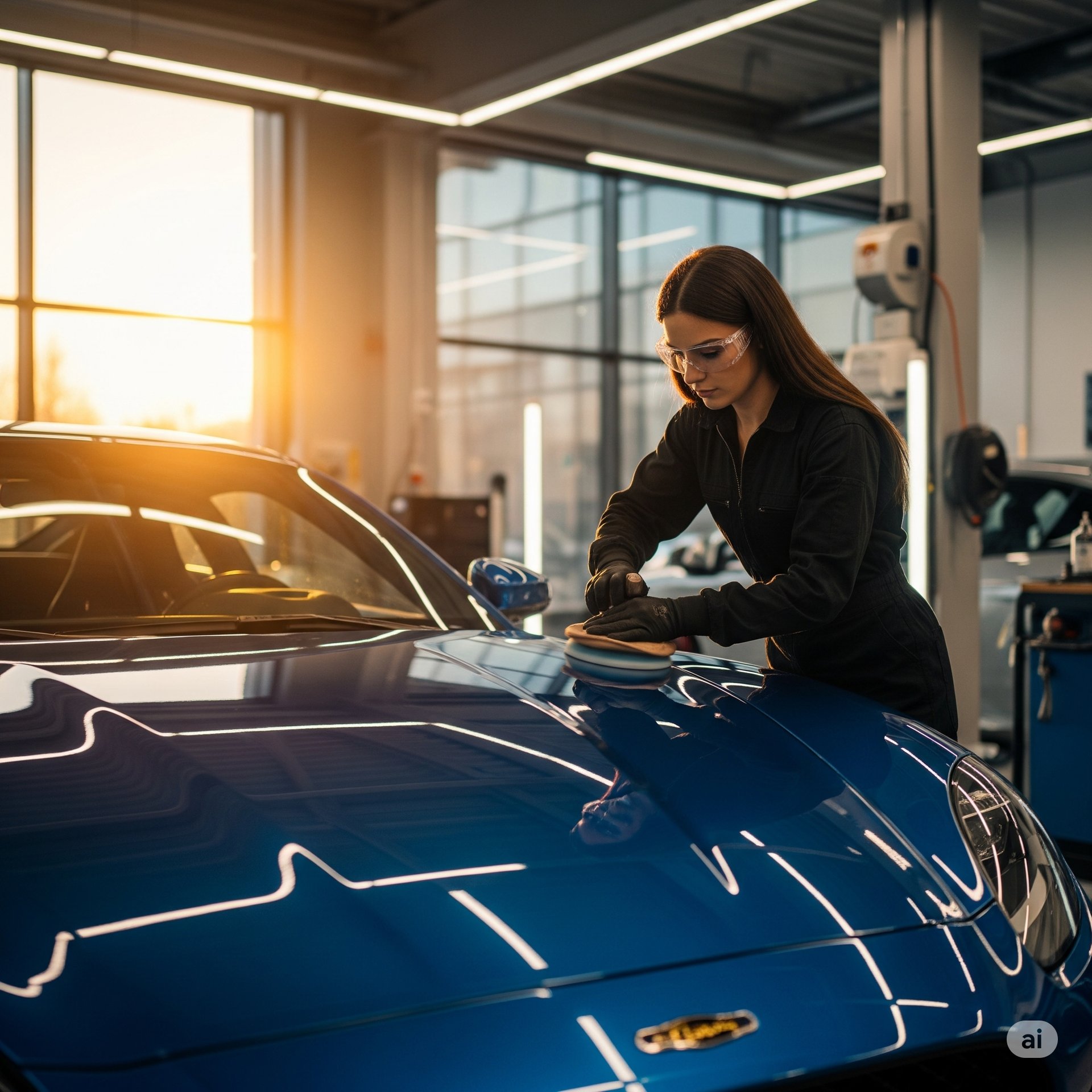
Frequently Asked Questions (FAQ)
Here we answer the most common questions we receive about car detailing, paint correction, and maintenance.
Car Washing & Basic Maintenance
How often should I wash my car?
This depends on your environment and usage. Generally, every one to two weeks is recommended to prevent the buildup of contaminants like bird droppings, bug splatter, and road grime, which can damage your paint.
Can I use dish soap to wash my car?
No, you should never use dish soap. It contains harsh degreasers that strip away your car's wax or sealant, leaving the paint unprotected and prone to oxidation and fading. Always use a dedicated, pH-neutral car wash shampoo.
What is the 'two-bucket method' and why is it so important?
The two-bucket method is a fundamental technique to prevent scratches during washing. One bucket holds your soapy car wash solution, and the second holds plain water for rinsing your wash mitt. This prevents dirt and grit from your car from contaminating your clean soap bucket, effectively stopping you from rubbing dirt back onto the paint.
Are automatic car washes safe for my paint?
Touchless automatic washes are generally safer than those with brushes, but they often use harsh chemicals to compensate for the lack of agitation. Car washes with spinning brushes or soft cloths can cause fine scratches and swirl marks over time because the brushes are not cleaned between vehicles and can hold abrasive grit. Hand washing is always the safest method.
What are those rough bumps I feel on my paint even after washing?
Those are bonded contaminants. Things like industrial fallout, tree sap, and road tar can embed themselves in your clear coat. They can't be removed by washing alone and require a clay bar or a chemical decontamination product to be safely lifted from the surface.
Paint Correction (Swirls, Scratches & Polishing)
What are swirl marks and how do they happen?
Swirl marks are microscopic scratches on the surface of your car's clear coat. They are most visible in direct sunlight and are typically caused by improper washing and drying techniques, such as using dirty towels, automatic brush car washes, or wiping a dusty car with a dry cloth.
What's the difference between polishing and compounding?
Compounding is a more aggressive process that uses abrasive particles to level the clear coat and remove deeper defects like heavy scratches, oxidation, and severe swirl marks. Polishing is a less aggressive process that uses finer abrasives to refine the surface, removing light swirl marks and increasing gloss and clarity. You typically compound first, then follow with a polish.
Can I remove scratches myself?
It depends on the depth of the scratch. A good rule of thumb is the "fingernail test." If you run your fingernail across the scratch and it doesn't catch, it's likely a light scratch in the clear coat that can be polished out. If your nail catches, the scratch is deeper (possibly into the base coat or primer) and may require professional attention or touch-up paint.
Do I need a machine polisher to get good results?
While you can achieve minor improvements by hand polishing, a machine polisher (especially a Dual Action or "DA" polisher) is necessary to achieve true paint correction. A DA polisher is safe for beginners and provides the consistent speed and power needed to remove defects effectively and create a flawless, high-gloss finish.
Precision
Expert automotive detailing and paint correction services.
Contact us.
Get pro tip and exclusive content
+61-450-410-076
© 2025. All rights reserved.
